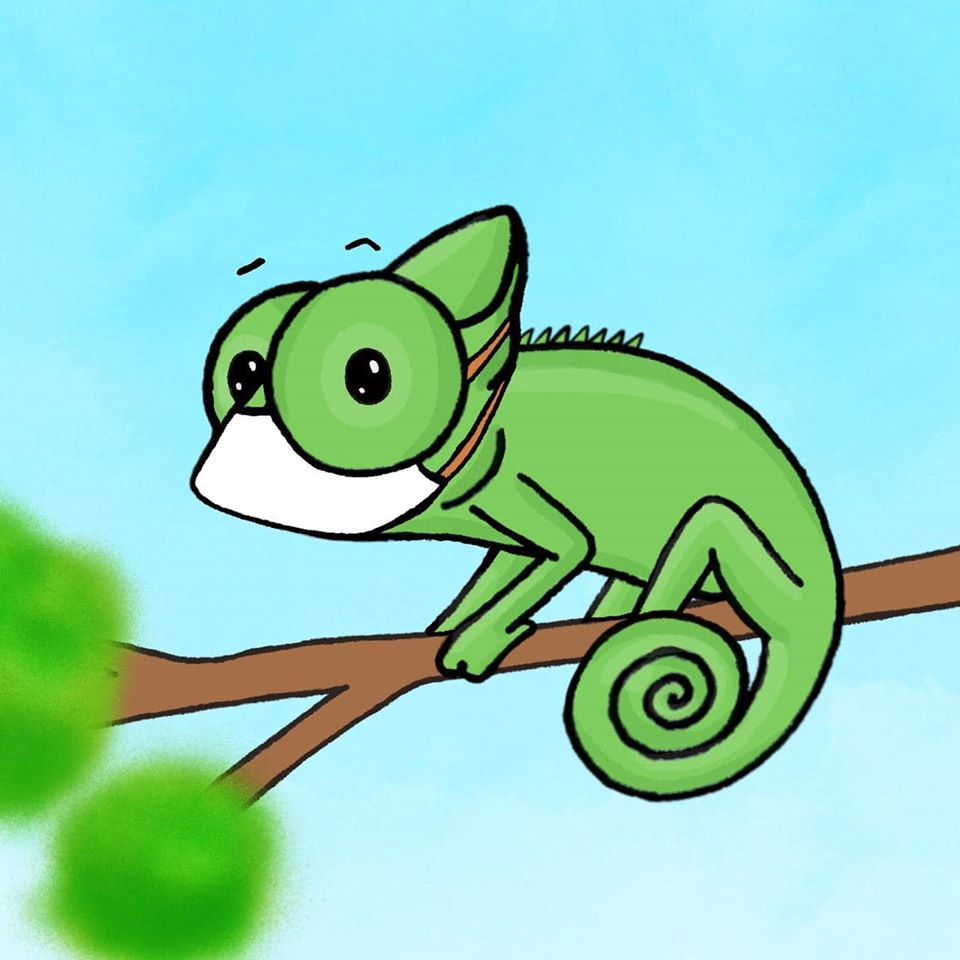Chameleons Are Masters In Social Distancing, Let Us Learn From Them

Chameleons are fantastic beings that if respected and observed us very interesting stories and explain smany things, normally hidden from us.
We live in hard times when the Pandemia of CoVid infection forces us to face previously unheard challenges.
One of them is a very strange and unnatural behavior for us, humans, the social and crowd-loving mammals:
The s.c. "Social distancing". The purpose of it is obvious: to spread in space efficient way to avoid/reduce the proximity to disable/prevent/limit the chance of transmission of highly contagious disease from one human to another.
Chameleons are often considered solitary animals that want to live alone, they are labelled as aggressive to each other and many of their behavioral patterns are explained this way...
This is, in a great extent, a sinful anthropomorphisation! The truth is absolutely different!
Chameleons are highly social animals!
The issue is, their nature is very special and unusual and the following factors shape dramatically their behavioral patterns:
- slow movements,
- eating low-nutritional-level food,
- feeding on resources rather limited in space and time,
- building strong populations,
- having immense breeding potential of up to tens to hundreds of offsprings from one adult couple,
- limited action radius of hunting determined by the length of their tongue,
- etc.
From the moment when they are born they are programmed to run-run-run in different directions in order to spread in the environment over the biggest possible distance. The function of this phenomenon was described already and the main purpose is to distribute in the environment evenly to utilize the natural food resources without competing purposelessly with each other. Plus, it has additional benefits:
- in controlling the inbreeding,
- spreading not to be a simple target for predators as a social unit,
- preventing the spreading infections and parasites (here!),
- preventing close contact causing aggression.
The babies run and run and run till they either do not see any of the siblings and/or till they exhaust the energy reserves of the remnants of the yolk sac. Then they climb up. And they control being far from the other congeners all the time and all life long, except for purposeful exceptions, when they pair bond to produce offsprings.
While living in low strata of the biotopes initially and climbing step by step from the grass levels to the canopies of trees and bushes during their onthogeny, many die. Still, they keep distance and spread further.
In captivity, people often keep chameleons either as single animals or if keeping many, they put visual separators not only between the cages positioned next to each other, where the distance is stressfully short, but also over distance. The results of it are:
- sociopathic males that kill the females instead of mating with them,
- extreme stress if exposed to each other,
- females not ready to allow the male to near despite the hormones show the color patterns she is receptive.
Therefore, allowing chameleons to preform their communications and socializing over a safe distance of several meters is an integral part of naturalistic captive husbandry and part of the chameleon welfare. If alone, at least a mirror can keep a chameleon in a fake belief, it is not alone. In sight contact, the chameleons can practice almost all their social interactions over distance and stay behaving predictable normal physiological way.
Picture courtesy Anastasiia Shiryiaeva